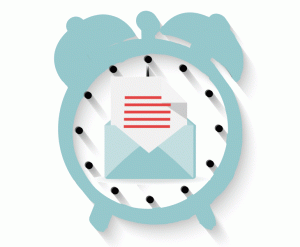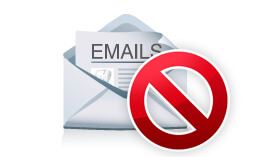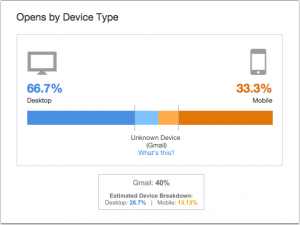Congrats! You’ve successfully sent your email marketing campaign to your subscribers. Now here comes the fun part: tracking and measuring the campaign’s effectiveness.
Planning and creating an effective email marketing campaign can get overwhelming at times – we know! Sometimes, marketers just rely on opens and clicks as a way to measure its success. In addition to response rates, a well-executed email requires a lot more attention to detail.
So, how do you track more than just clicks and opens? Let’s go over some tips on the type of data you should be tracking in your next email marketing campaign.
 1. Time Engagement
1. Time Engagement
There are plenty of general guidelines for the ideal time and day to send out your email marketing campaigns. Even though these tips can be beneficial for some businesses, it all just depends on learning the behavior of your target audience. That’s why it’s important to experiment with different times, and gather user engagement data over time in order to find out what works best for your business.
 2. Email Forwards
2. Email Forwards
Fact #1: “Almost 70% of all messages in people’s inboxes are non-personal” (Source: Marketing Land). Whether they’re coupons, special offers or other resources, this means that your subscribers showed an interest in your content, and found it useful enough to share it with friends, family, or even coworkers. This not only increases response rates, but also helps you improve your email marketing strategy.
This article shows a perfect example of how two well-known companies achieved a successful forward rate with similar campaigns.
3. Unsubscribe Rate
Surprisingly, this form of metrics is commonly ignored unless the unsubscribe rate is drastically high. However, this type of data can actually be beneficial in the development of an email campaign. Marketers should pay careful attention to what users like and dislike, and more importantly, know how to improve the content that’s shared in future campaigns. Also, you should consider the reasons behind the “unsubscriber,” and whether the email was a hard bounce, or simply thrown into spam.
Wait…what’s a hard bounce?
 Hard bounce vs. Soft Bounce
Hard bounce vs. Soft Bounce
A hard bounce refers to an email message that was returned to the sender because the recipient’s address was invalid, or it was rejected by the server. Some reasons include:
- Subscriber’s email address doesn’t exist (a valid email can also hard bounce, or user can mistakenly unsubscribe).
- Domain name does not exist
- Subscriber’s email server blocked delivery
A soft bounce indicates a temporary delivery issue which can later result in a hard bounce if the email address continues to soft bounce after several campaigns. These are a few common errors:
- Mailbox is full
- Subscriber’s email server is down or offline
- Email message exceeds capacity
(Source: MailChimp)
4. Type of Device
Fact #2: “48% of emails are opened on mobile devices” (Source: HubSpot Blogs). Since most people have access to their emails on the go, it’s important to consider how your emails will work on mobile devices, and how to differentiate its effectiveness from a web browser.
As marketers, that’s nothing new. However, it’s easy to ignore these small details while developing your email marketing campaign in terms of creativity and length of content. Tracking email opens that are coming from a mobile device vs. a desktop mainly depends on the recipient’s schedule and lifestyle.
5. Email Client
Unfortunately, not all email clients are created equal. As a result, your well-crafted email campaign may not display properly on all platforms causing a decrease in opens. That’s why our team of skilled professionals utilizes the latest technology with our own emails to ensure that they are successfully delivered and visible on any email client software.
Tracking your opens by email client helps you gather enough information about your subscribers in order to optimize your templates, and make sure your content displays correctly.
Wrapping it up
Overall, tracking and measuring your email marketing campaigns not only provides more insights into user behavior, but also allows you to test different marketing strategies until you find one that fits your business goals.
Cultura Interactive is a full service, Fort Lauderdale web design agency that strives to not only create unique and attractive websites, but also helps businesses improve their internet marketing strategies in a less-complicated way.
Our team of professionals specialize in web design, logo design, WordPress development, eCommerce, responsive web design, mobile apps, SEO, social media marketing, pay per click advertising and more. Learn more about our services or contact us for a personal interview.




